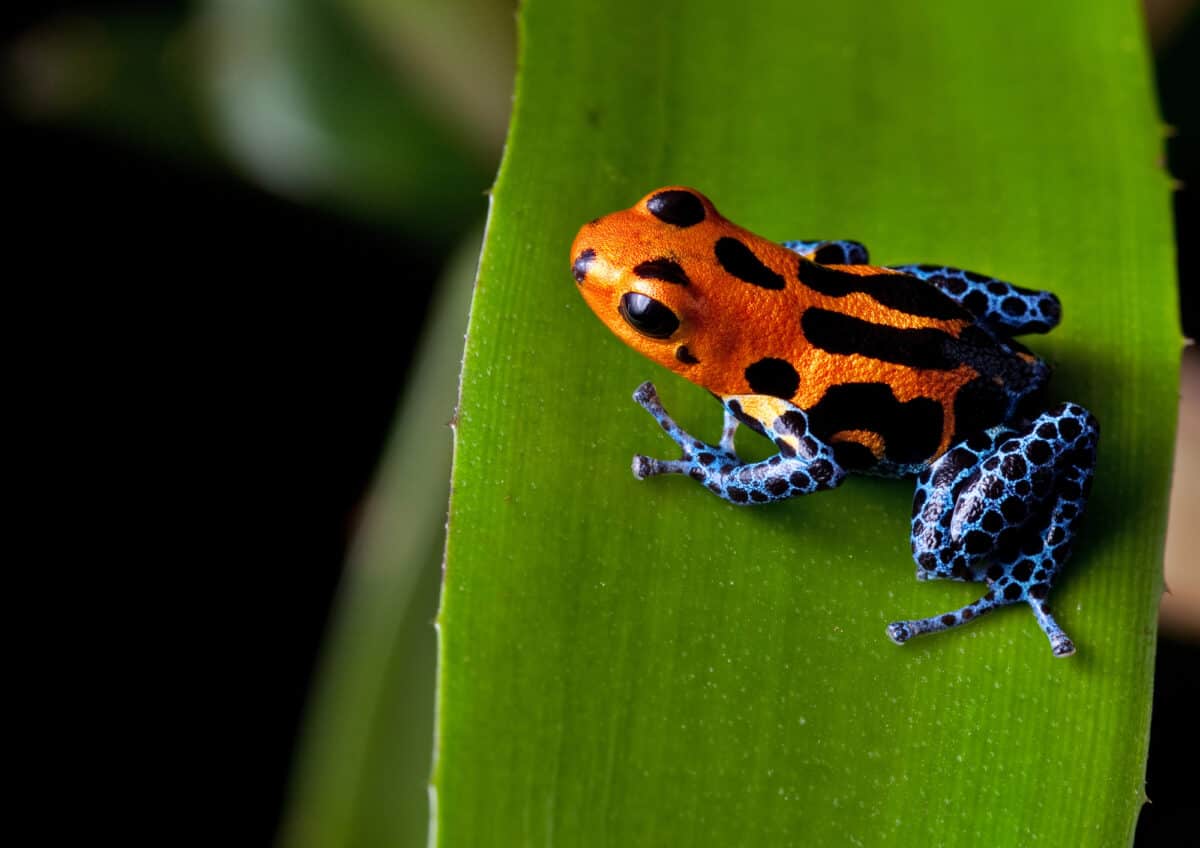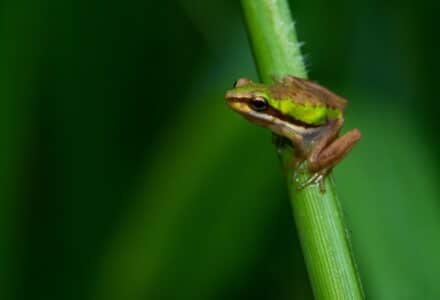There are over 8,000 amphibian species in the world. This diverse group is mostly characterized by their moist skin and ability to live on both land and in water. Amphibians are mostly found in habitats close to water and are well-adapted for their unique lifestyle. Let’s have a further look at these incredible creatures!
Introducing Amphibians

I always thought the name amphibians was reserved only for frogs and toads, but to my surprise, salamanders, newts, and caecilians also fall into this animal group. Although these different species groups share many similarities they have wildly different physical appearances. Just another way Mother Nature shows her diversity!
So let’s have a look at some of the characteristics belonging to amphibians. These are vertebrate animals that are born in water and undergo metamorphosis where they develop lungs and limbs allowing them to live in both land and water environments. They are known for their moist, or slimy, skin and cold-blooded nature, and double-channeled hearing systems.
How do amphibians reproduce?

Amphibians reproduce through external fertilization and lay eggs, but not the hard-shelled ones we naturally think of. Instead, the multiple eggs they lay are often grouped in a slime-like membrane. These eggs also have to be moist to hatch, which is why most amphibians lay their eggs in water! Those who lay their eggs on land have developed ways to moisten them.
Once hatched, the offspring, called larvae or tadpoles, are water-based for the first while of their lives. They undergo a process called metamorphosis and turn into fully developed animals!
What is the difference between reptiles and amphibians?
This could be a quite tricky question! The first thing you can look at is the animals’ skin. Amphibians don’t have scales but have moist, even slimy, skin that prevents them from drying out. Different from reptiles who have dry and scaly skin.
Although both amphibians and reptiles lay eggs, amphibians typically lay their eggs in water and reptiles theirs on land. Amhpians are also born with gills to breathe in water and only after metamorphosis develop their lungs. Whereas reptiles are born on land with fully functional lungs.
Articles on Amphibians
Amphibian Comparison
| Common Name | Scientific Name | Size | Fun Fact |
| Axolotl | Ambystoma mexicanum | 6 – 18 inches2 – 8 ounces | They can stay in their larvae state indefinitely. |
| Tiger Salamander | Ambystoma tigrinum | 3 – 8 inches2 – 4 ounces | They spend most of the year underground. |
| Caecilians | Gymnophiona spp. | 3 inches – 5 feet | Their name means “blind ones”, suited because they can’t see! |
| Luristan Newt | Neurergus kaiseri | 5 inches | They only live in the Luristan Province of Iran. |
| Glass Frogs | Centrolenidae spp. | 0.75 – 1.5 inches | Their skin is see-through showing their organs. |
| American Toad | Anaxyrus americanus | 2 – 3.5 inches | They hibernate during winter months. |
Amphibian FAQs
Fully grown amphibians will eat almost anything they can fit into their mouths! These animals are considered carnivores as they prefer live food, almost anything ranging from insects to snails to worms and even small birds.
These animals have an interesting lifestyle, living partly on land and partly on water. This means that amphibians are found in moist and wet habitats worldwide, except Antarctica.
While these amphibians might look similar from far, up close you can see that toads have bumpy, thick, and sometimes dry skin. While frogs’ skin is smooth, slimy, and moist. Toads also have less prominent eyes than the bulgy eyes frogs sport.
As we have learned by now, amphibians are not just frogs and toads. You can recognize an amphibian by their moist skin and their ability to live on both land and water. Most amphibians also have four limbs, except for some salamanders and caecilians.
Amphibians need their skin to be moist to absorb oxygen. That’s right, they breathe through their skins! To keep their skin moist, and themselves alive, they secrete a mucus which gives them their slimy appearance.
Newest Category: Amphibians
- Water Loving Golden Retriever Sneakily Takes Dips in the Neighbor’s Pool - July 22, 2024
- Angry Elephant Bull Charges Safari Vehicle - July 21, 2024
- Lioness Catches 6 Dogs In 7 Days From Kenya Homes – But Wives Are Happy - July 21, 2024









